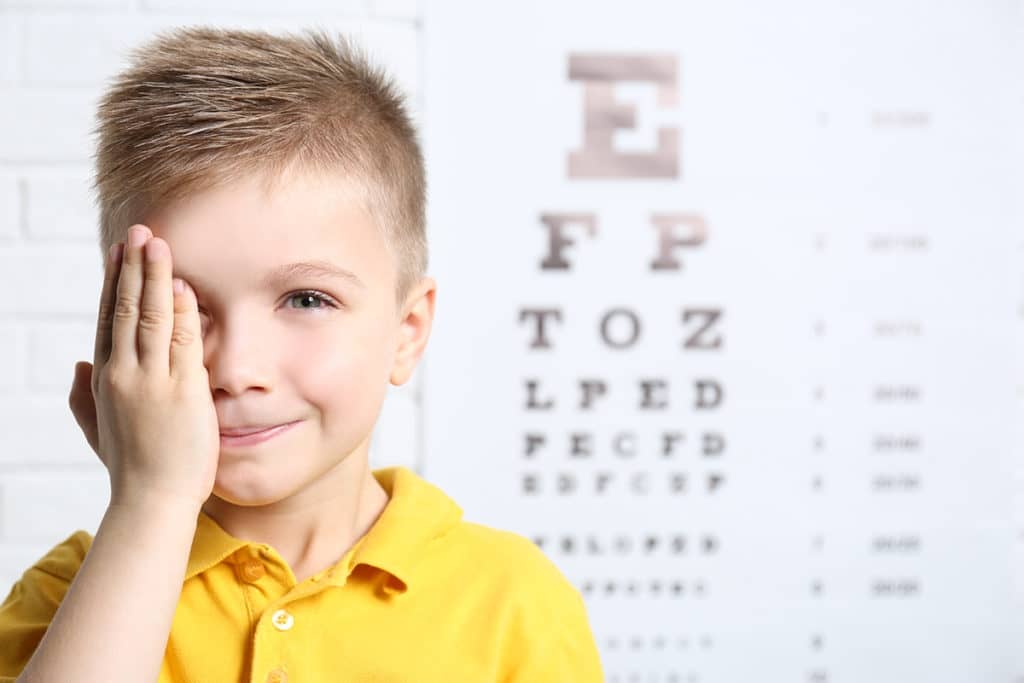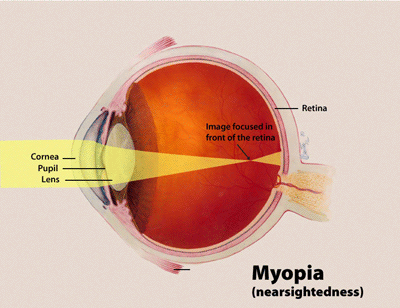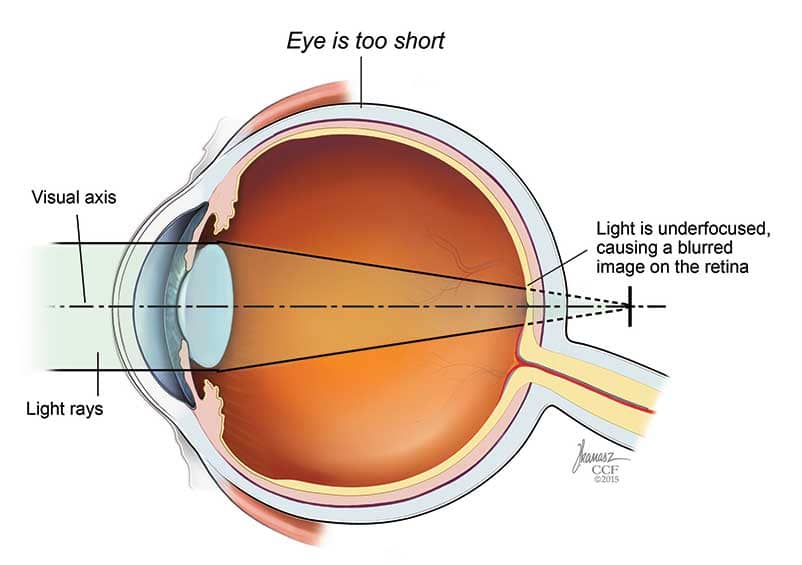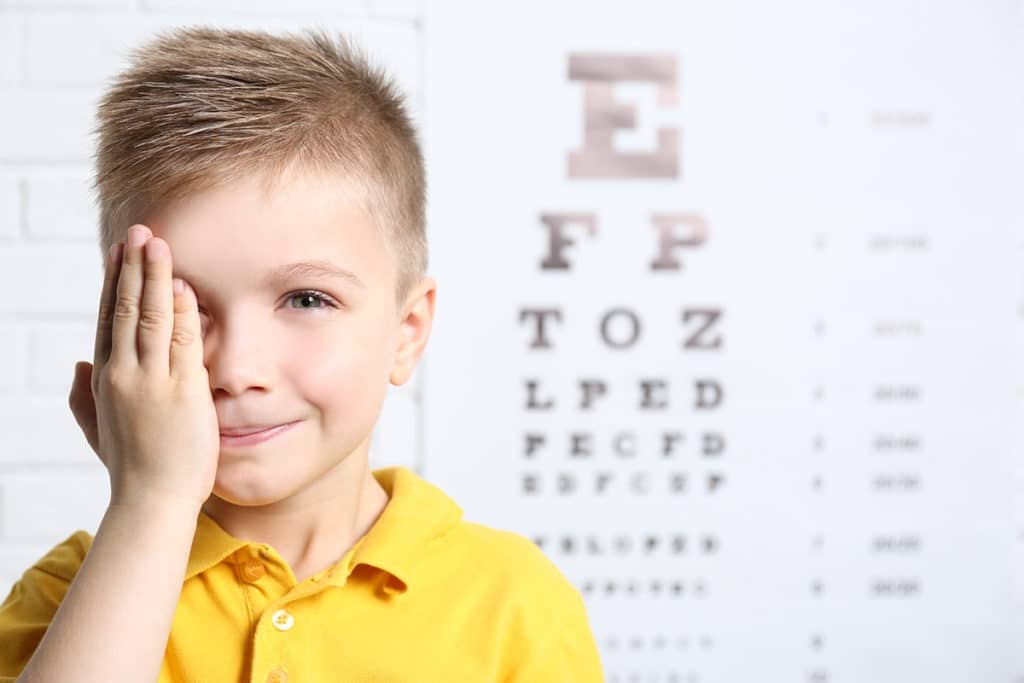
Description & Process
Refractive errors are the most frequent eye problems in children and adults. These include myopia (near-sightedness), hyperopia (farsightedness), astigmatism (distorted vision at all distances), and presbyopia that occurs after age 40 years (loss of the ability to focus up close, inability to read letters of the phone book, need to hold newspaper farther away to see clearly) can be corrected by eyeglasses, contact lenses, or in some cases surgery.
Myopia
Nearsightedness is a refractive error. This occurs when the light entering the eye does not focus on the retina, but focuses in front of the retina. This happens when the eyeball is elongated or the cornea is curved differently. Since light does not focus properly, the images are not clear. If myopia is mild, ophthalmologists will call it light myopia, and if it is severe they will call it high myopia or pathological myopia. High myopia can be corrected by wearing glasses or contact lenses, or by corrective surgery. There are other methods to reduce myopia that are used to prevent myopia from increasing rapidly or limiting it. Although myopia is more of a familial condition, it has been linked to use of computers and high screen time in young children. Some symptoms of myopia include, eyestrain, headache, squinting and difficulty seeing objects far away.
Hyperopia
Far-sightedness is a refractive error which is the opposite of myopia. It occurs when the light entering the eye focuses behind the retina and not on the retina. The eyeball may be smaller in size or the cornea may be curved differently to cause this. Children are normally born with a small amount of hyperopia which they outgrow by the age of three years. This kind of refractive error sometimes gives no symptoms as the eyes can use the accommodation muscles to focus and see clearly. Your ophthalmologist may need to use cycloplegic eyedrops to relax the accommodation to measure this kind of refractive error.
Presbyopia
Most commonly noted in the 1940’s, this refractive error happens because of weakening accommodation muscles. Presbyopia shows up as difficulty in reading up close and wanting to rub your eyes, squint your eyes or use bright lights when reading something. You may notice yourself extending your hand to hold your book or phone further away, or you may feel like enlarging your phone’s font size. Using presbyopic glasses or contact lenses while reading is an easy fix. Contrary to popular belief, using these support tools for clear near vision does not make you dependent on them. They just prevent your eyes from getting tired and help them focus on the near vision better. In addition to contact lens fitting and finding the right eyewear fit for your needs, we also provide assessment and evaluation for refractive surgeries.
Contact us today to discuss how our specialists can help manage your eye health.



